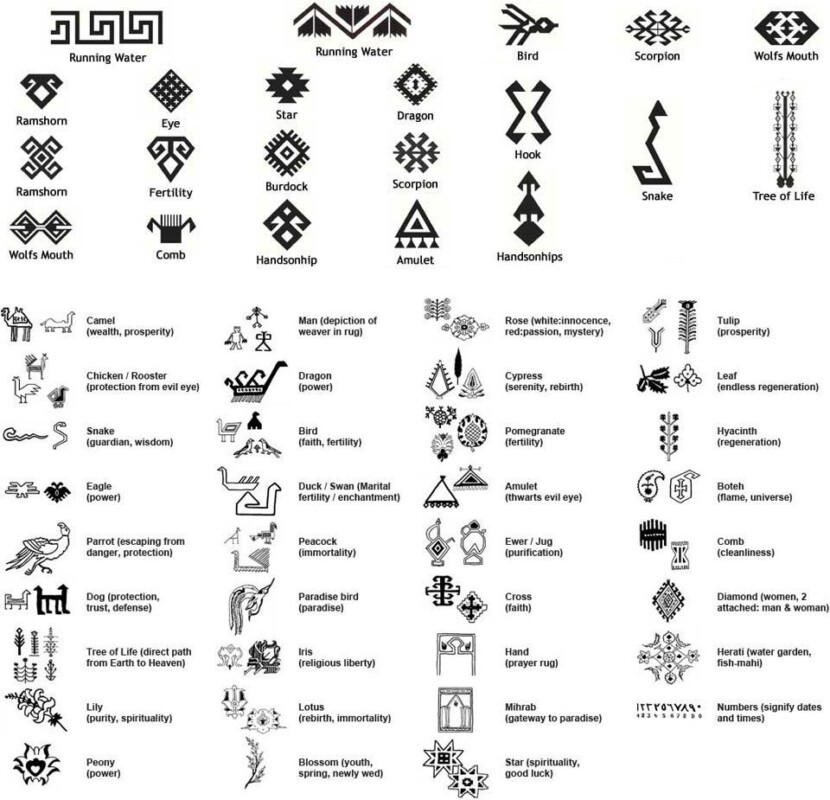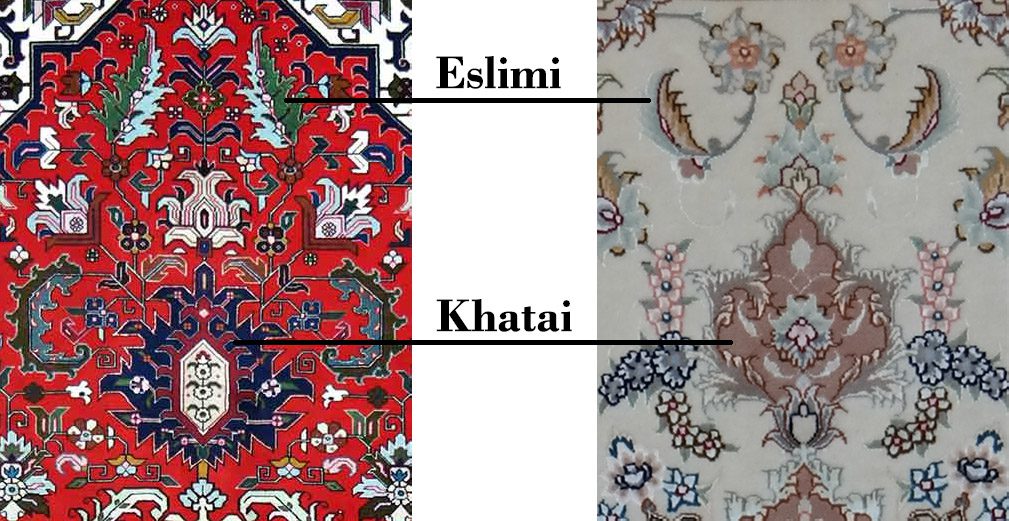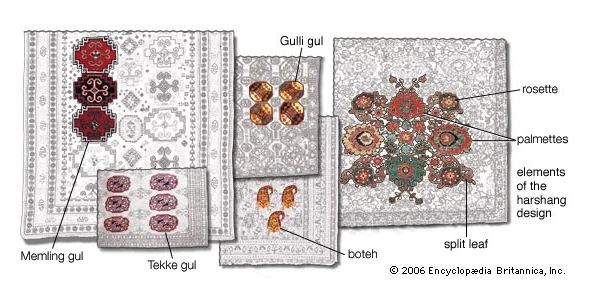Irana Carpets
Carpet Designs (Part 3)
Carpet Designs (Part 3)
Previously, we talked about the Eslimi (leaf) and Khatai (Flower) motifs as two important motifs of Persian carpet designs. Today we want to take a look at the geometric designs and the ideas behind them to better understand the meaning behind Persian rugs.
The geometric motifs, as evident from their name, are a combination of horizontal, vertical and diagonal lines that together form geometric designs of Persian rugs. The use of these motifs in carpet knotting is common among nomads across the country. Nomads do not use fantasy motifs to knot carpets, but they look at nature and take inspiration and with their creativity they combine these motifs together to create many designs. These motifs have meaning and represent symbols that can be seen below:

Geometric designs are common in traditional rugs Ghasghai , Bakhtiari , Hamadan , Yalameh , Mud , Hossein Abad, Sirjan , Nahavand , Malayer and Seneh . Some of the Persian carpet motifs such as Eslimi and Khatai also appear on the geometric designs of the carpets, but in a stylized way. It means that the curved lines of the motifs are stylized on vertical, horizontal and diagonal lines to give them a more geometric shape. Because of the beauty of these motifs, they can also be seen on Persian rugs that are woven in cities like Tabriz .

The geometric designs make the rugs also suitable for modern environments alongside the classic ones, and this fact is bringing more attention to geometric Persian rugs. Recently in the European market, interior designers are using geometric Persian rugs as an element in modern environments to bring magnetism to the environment. Choosing a geometric Persian rug ensures the beauty of the home.



